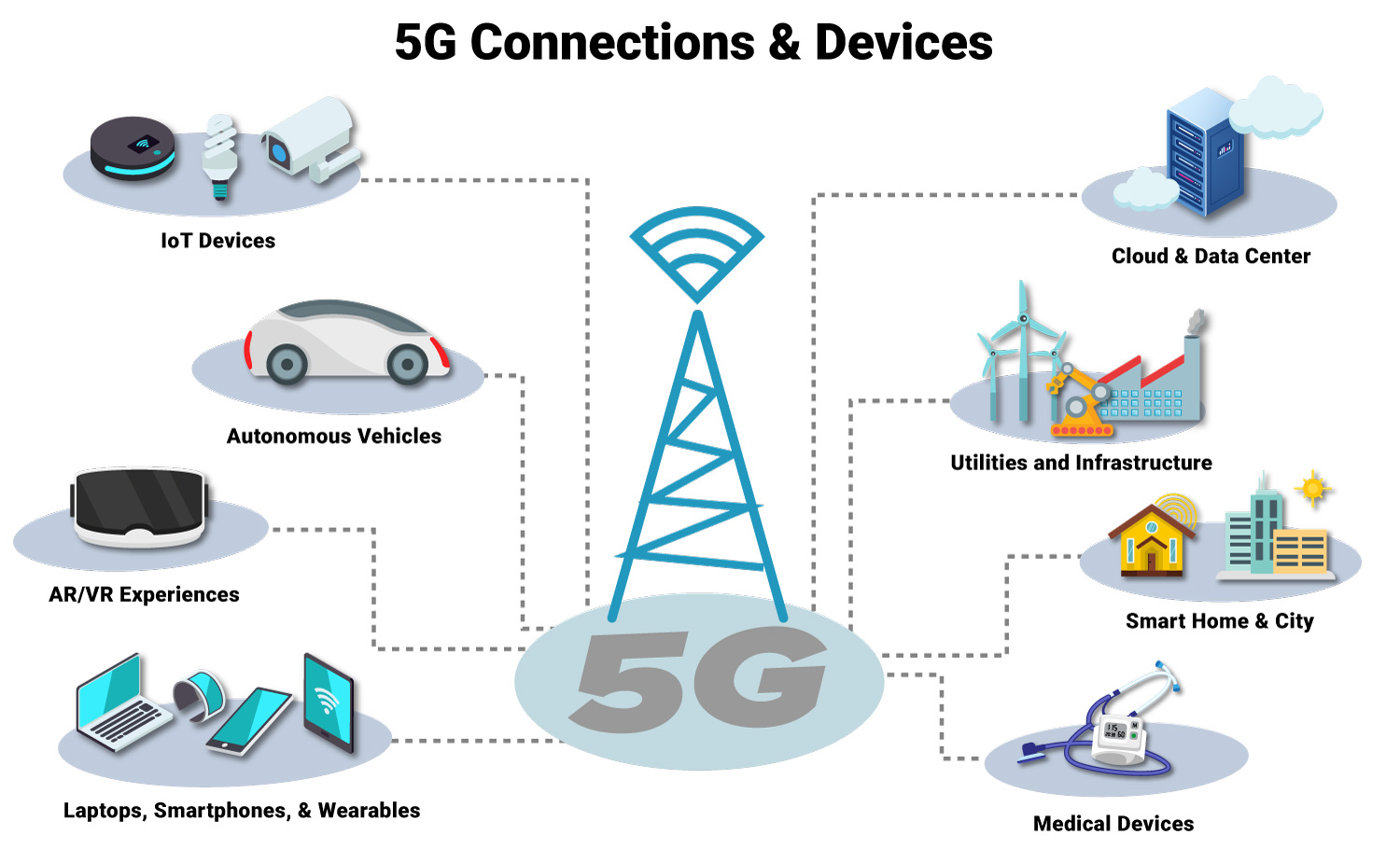Rise by Six: Your Daily Dose of Inspiration
Explore insights and stories that elevate your day.
5G: The Fast Lane to a Connected World
Discover how 5G is transforming our lives and paving the way to a hyper-connected future. Buckle up for the speed revolution!
What is 5G and How Will it Transform Our Everyday Lives?
5G, the fifth generation of mobile internet connectivity, promises to revolutionize how we interact with technology and each other. Unlike its predecessors, 4G and 3G, 5G delivers incredibly high speeds, reduced latency, and the ability to connect a vast number of devices simultaneously. This enhanced capacity is not just about faster downloads; it opens the door to innovations such as smart cities, where everything from traffic lights to public transportation can communicate in real-time, leading to improved efficiency and safety.
The impact of 5G on our everyday lives will be profound. For instance, in healthcare, doctors could perform remote surgeries with precision using connected medical devices, while in education, students can participate in immersive virtual reality experiences from anywhere in the world. Moreover, 5G will accelerate the development of the Internet of Things (IoT), allowing smart home devices to function seamlessly together, enhancing comfort and security in our daily routines. Overall, the transition to 5G stands to create a more connected, efficient, and dynamic world.

The Impact of 5G on the Internet of Things: Connecting a Smarter Future
The advent of 5G technology is set to revolutionize the Internet of Things (IoT), fostering an environment where devices can communicate more efficiently and effectively than ever before. With its incredibly fast data transfer rates, low latency, and the ability to connect thousands of devices simultaneously, 5G creates a robust framework for smart cities, autonomous vehicles, and various smart home technologies. This connectivity enhances user experience, enabling real-time data sharing and processing, which is crucial for applications such as telemedicine, smart grids, and industrial automation.
As 5G continues to roll out globally, its impact on the IoT ecosystem will be profound. Enhanced connectivity will lead to the emergence of innovative solutions that address a variety of challenges, from improving energy efficiency to streamlining supply chains. Furthermore, the combination of 5G and IoT is paving the way for advanced technologies such as artificial intelligence and machine learning, which will further optimize processes and decision-making. In essence, 5G is not just a technological upgrade; it represents a paradigm shift towards a smarter and more connected future.
5G vs 4G: What’s the Difference and Why It Matters for Consumers?
5G and 4G are two generations of mobile network technology, each representing significant advancements in speed, capacity, and connectivity. 4G, which launched in the early 2010s, offered a maximum download speed of around 100 Mbps under optimal conditions, allowing users to stream videos, browse social media, and enjoy more data-heavy applications seamlessly. In contrast, 5G, the latest iteration rolled out in 2019, boasts theoretical download speeds exceeding 10 Gbps, enabling a whole new level of experiences, such as enhanced virtual reality (VR) and augmented reality (AR) applications, ultra-fast cloud gaming, and improved smart device connectivity.
The improvements offered by 5G go beyond just speed; they also introduce lower latency and higher capacity. While 4G networks typically experience latency ranging from 30 to 50 milliseconds, 5G aims for a latency as low as 1 millisecond, which is essential for applications like remote surgery or real-time gaming. For consumers, this means a more responsive experience across all mobile applications and the potential for connecting a greater number of devices simultaneously without a drop in performance. As such, understanding the differences between 5G and 4G not only helps consumers make informed decisions about their mobile plans but also prepares them for the future of connectivity.